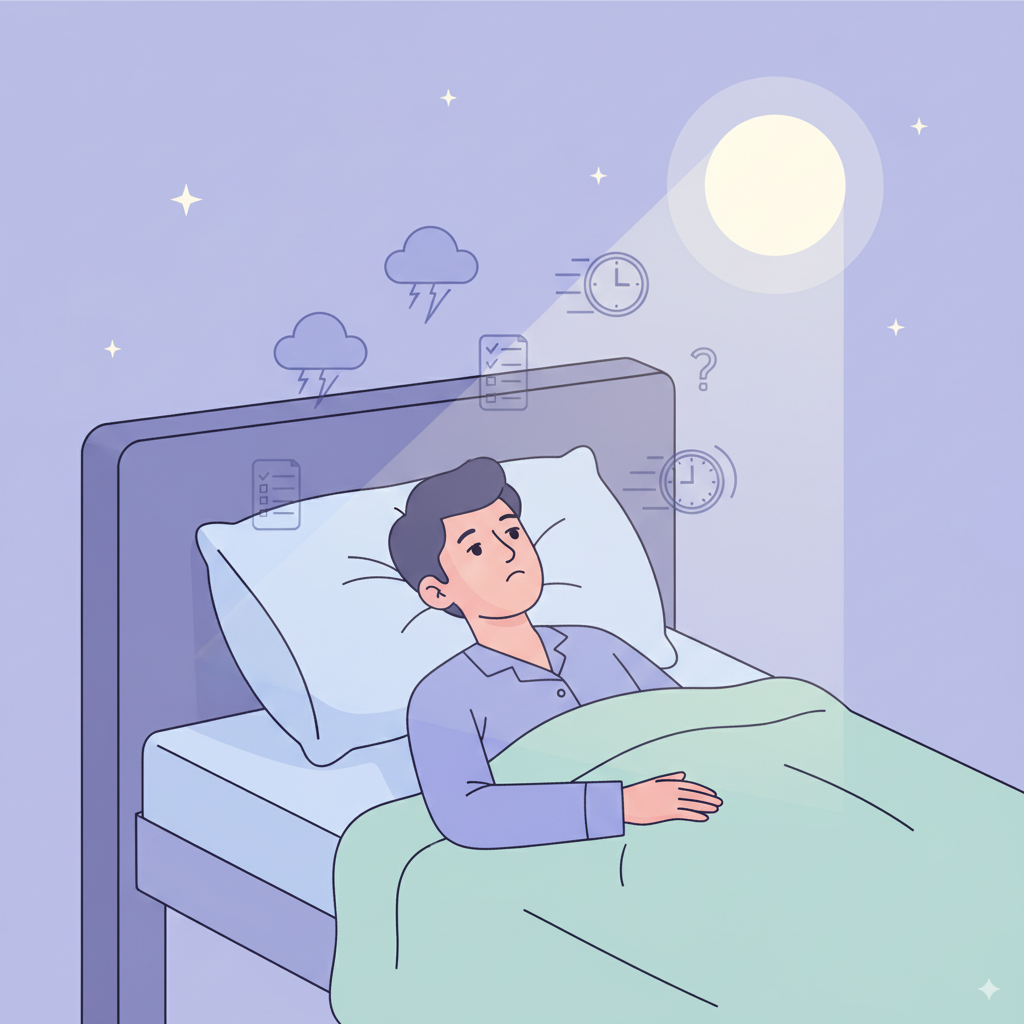
If you’ve ever found yourself lying in bed, staring at the ceiling, while your mind refuses to shut off — you’re not alone. Many people experience intrusive thoughts at night, and they can range from random worries to deeply unsettling ideas. The good news? 🌟 There are proven ways to manage these thoughts and finally get the rest you deserve.
In this blog, we’ll break down why intrusive thoughts happen at night, what they look like, and the most effective strategies to handle them — all in simple, actionable steps.
🧠 What Are Intrusive Thoughts at Night?
Intrusive thoughts are unwanted mental interruptions — worries, fears, or images that pop into your head without invitation. At night, when the world is quiet and you’re trying to rest, these thoughts can feel louder and more overwhelming.
Examples include:
– “Did I lock the door?”
– “What if I mess up at work tomorrow?”
– Replaying awkward conversations from years ago.
– Imagining worst-case scenarios about health, relationships, or the future.
👉 These thoughts don’t define who you are. They’re just a mental glitch — and learning to manage them is key to better sleep.
🌌 Why Do Intrusive Thoughts Get Worse at Night?
There are a few reasons your brain tends to overthink at bedtime:
1. Quiet Environment → With no distractions, your mind has space to wander.
2. Stress Carryover → Unprocessed stress from the day shows up when you lie down.
3. Brain Chemistry → At night, cortisol (stress hormone) doesn’t vanish instantly, so your mind may still be wired.
4. Hyperarousal → If you already struggle with anxiety or insomnia, bedtime can trigger more “what if” thinking.
🛠️ Step 1: Create a Pre-Sleep “Mind Dump”
One of the simplest tricks is doing a brain dump before bed.
– Take 5–10 minutes with a notebook.
– Write down all worries, to-do lists, or random thoughts.
– Tell yourself: “These belong to tomorrow. I don’t need to carry them into my sleep.”
🌙 Step 2: Build a Calming Night Routine
Intrusive thoughts thrive on chaos. A soothing routine signals to your brain that it’s time to wind down.
Ideas to try:
– Dim the lights 1 hour before bed.
– Drink a warm caffeine-free tea.
– Play calming soundscapes (rain, ocean waves 🌊).
– Gentle stretching or yoga poses.
– Read a light, positive book (avoid scary or heavy topics).
🎧 Step 3: Use Guided Audio or White Noise
When silence feels too loud, use sound as a shield.
– Guided meditations → Focus your mind away from intrusive thoughts.
– White noise or brown noise → Helps mask sudden distracting sounds.
– Sleep stories or calming podcasts → Keeps your brain engaged but relaxed.
Pro tip: Keep your volume low enough that it feels like background comfort, not stimulation.
🛡️ Step 4: Practice the “Label and Release” Technique
When a thought pops up, instead of wrestling with it, try this:
1. Notice it → “This is just a thought.”
2. Label it → “This is worry,” or “This is imagination.”
3. Release it → Imagine putting the thought in a balloon 🎈 and letting it drift away.
🧘 Step 5: Try Relaxation Techniques
Relaxation reduces both mental chatter and physical tension. A few quick ones:
– Box Breathing (4-4-4-4) → Inhale for 4, hold 4, exhale 4, hold 4.
– Progressive Muscle Relaxation → Tense and release each body part, starting from toes upward.
– Visualization → Picture yourself on a calm beach or under a starry sky.
📵 Step 6: Cut Out Bedtime Triggers
Certain habits make intrusive thoughts worse:
– Scrolling social media → Overstimulation + comparison anxiety.
– Late-night caffeine or sugar → Keeps the brain alert.
– Watching intense TV/news → Adds fresh worries.
Make your bed a tech-free zone at least 30–60 minutes before sleep.
🌿 Step 7: Keep a “Worry Window” in the Day
If your brain insists on worrying, schedule it!
– Pick a 15-minute “worry window” during the day.
– Write down all your anxious thoughts.
– Once bedtime arrives, remind yourself: “I’ve already dealt with this today.”
🛠️ Step 8: Know When to Seek Support
Sometimes, intrusive thoughts point to deeper issues like anxiety disorders, OCD, or trauma.
Seek help if:
– The thoughts are daily and overwhelming.
– They stop you from functioning normally.
– They come with panic attacks or depression.
Talking to a therapist, counselor, or doctor can provide tools tailored to your needs.
🌟 Final Thoughts
Intrusive thoughts at night can feel exhausting — like your brain has its own late-night talk show. But with the right strategies — mind dump, calming routine, sound therapy, relaxation, and mindful labeling — you can take back control.
Remember: thoughts are not facts. They’re temporary visitors. And with practice, you’ll learn how to let them pass while you drift into peaceful sleep. 😴✨



Leave a Reply